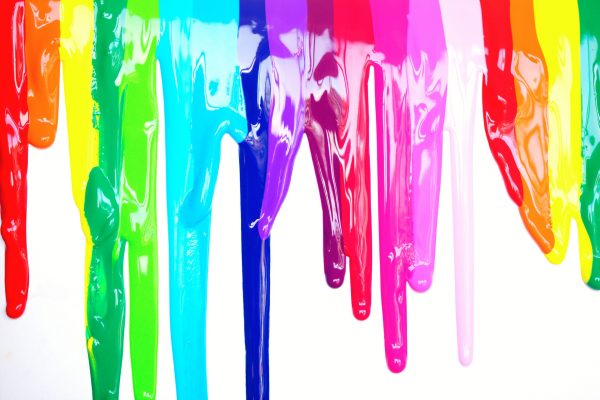Colour Psychology: The Significance of Paint Colour

“A painted surface is a real, living form”. – Kazimir Severinovich Malevich
What is your favourite colour? A response takes considerable thought; you will need to mentally shuffle through different hues, tossing each one aside once it is rejected. In order to settle upon a favourite shade, you will need to draw upon memories and emotions, some dating back as far as your childhood.
Even as children, your perception of colour is complex; a large box of crayons offers an opportunity to select a favourite colour based on both its name and shade. As you grow, colours become associated with memories, people and emotions. They begin to become more convoluted in your mind, and choosing one above all others becomes more difficult.
Colour psychology, the impact that colour has with respect to our emotions, can be a powerful force in your life, especially when choosing a paint colour for your home. The dizzying array of available options, combined with your emotional ties to specific colours, produces a decision worthy of intense consideration.
The Colour Of The Year
Paint companies understand the impact of colour on your emotions; they know that the paint colours you use to decorate your home with, can have a profound effect on how you feel. Without even realizing it, you make a judgment about a room within the first 90 seconds of entering it. And, “between 62% and 90% of that assessment is based on colour alone”.
Knowing this, paint companies devote extensive time and effort into determining what colours are currently evoking consumers’ passions. Once a year, the majority of paint companies launch a Colour Of The Year (COTY).
This hue is chosen deliberately, after months of research into what colours and colour families are standing out at industry events, and what is being seen in fashion as well as throughout the world. The ultimate choice is a result of a two-way conversation between paint companies and consumers.
Paint companies attempt to select a colour at the beginning of its peak in popularity, by gauging what is inspired by the global mood. Benjamin Moore® executives believe that “consumers make it clear what they like, and the company shows the hues they might not have thought to look for”.
The launch of the annual COTY began in 2000 by Pantone® with the colour Cerulean. Nineteen years later, the now anticipated announcements still serve the main purpose of staking “out the company’s distinctive chromatic territory in an ocean of competing hues”. This year, Benjamin Moore® not only announced a distinctive COTY, but also “a curated rainbow of pastels and deep blues known as the 2020 Colour Trends palette”.
This departure from a single colour announcement, offers consumers a ready-made launching pad for home decorating. According to Benjamin Moore®’s Andrea Magno, “our goal is to inspire new ideas around colour and possibly to bring a new colour idea to the mind of someone embarking on a painting project”.
Paint Colour Names
The colours themselves however, aren’t alone in evoking emotions in consumers. Paint companies put considerable time and effort into choosing both the names and shades of paint, knowing the importance of each.
The paint colour name carries a lot of weight: it needs to create a connection with consumers, it needs to be memorable, it needs to be intriguing, it needs to evoke feelings within the consumer, and it needs to evoke the feeling of the colour itself. For instance, what do you imagine Benjamin Moore®’s colour, “Gentleman’s Gray”, looks like? Did you immediately conjure an image of an impeccably dressed gentleman?
The colour, although perhaps not as gray as you would imagine, definitely matches the richness of the name. This example demonstrates the care that paint companies take in choosing names; the “names are chosen based on the imagery and mood each colour evokes”.
Choosing Paint Colours For Your Home
So how can you utilize this information when choosing paint colours for your home? To begin the process, it is always recommended to consider one room at a time, while imagining your home as one cohesive entity. In other words, paint colours should be individually selected, depending on the specific function of a space and the intended feeling.
However, thought should also be given to the creation of a cohesive flow from one room to another. While it is true that specific colours and their names will speak to you based on your own personal experiences, general colour families can be selected according to the desired emotional effect each produces.
- Cool colours such as blue, green and purple can evoke a feeling of relaxation and can be both peaceful and comforting.
- Warm colours including red, orange and yellow, evoke a feeling of warmth. They can be used to represent coziness and comfort.
- Neutral colours such as white, cream and gray can create comforting and relaxing interiors.
Emotional Impact of Individual Colours
Red:
- A stimulating colour, it represents energy, danger, power, strength, passion, aspiration and love.
- When combined with neutral colours, red will create a warm effect.
Pink:
- Represents tranquility, warmth and love.
- Creates a calm, soothing and refreshing impression.
Orange:
- Represents sunshine, joy, stimulation and success.
- Creates a room evoking feelings of fun and socialization.
Yellow:
- An emotional colour, it represents joy, happiness, energy and intellect.
- Creates a room that feels warm and happy.
Green:
- Represents harmony, growth, and newness.
- Creates calm and relaxing interiors.
Blue:
- The world’s favourite colour, it represents intelligence, tranquility and serenity.
- Creates a soothing, clean and cool impression.
Purple:
- Represents wisdom and royalty.
- Creates rooms that resonate with a creative energy.
White:
- Represents cleanliness, innocence and purity.
- Creates a room with a fresh, renewed feeling.
Black:
- Represents elegance and sophistication.
- Creates rooms with a comforting and protective impression.
Choosing a paint colour is a very personal, subjective decision. Colours speak to you; a personal conversation based on your memories and experiences. So why not elicit some help with this decision? A Certified Ultimate Decorator™ can perform an Ultimate Benjamin Moore® Colour Consultation, and assist you in choosing the perfect colours for every room in your home.
He/she is trained to understand Colour Psychology and how it can used to create a space that reflects both you, and your feelings.






